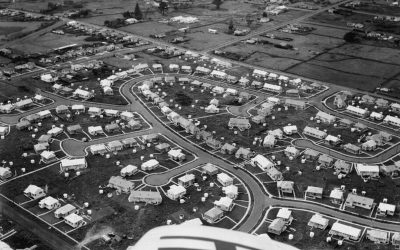A few months ago, I answered a crisis call from my boyhood friend Shawn.
“I don’t know what to do,” he was saying. “My electricity got cut off. I’ve got an extension cord running from my fridge to the laundry room across the hall.”
Mid-winter, the steam radiators in Shawn’s St. Mary’s Road basement digs suddenly failed. Countless voice mail messages to his landlord were never returned. In a crude adaptation, Shawn turned to his oven, cranking it up to full blast and leaving its door wide open for hours at a time. He used an oscillating fan to circulate the warmth throughout the flat.
The basement suite neighbouring Shawn’s had been condemned insanitary by the city’s health department weeks earlier, so he was unsure how the building’s other tenants were coping without their radiators. But weeks later his oven was still keeping him and his cat from freezing. Even if it would’ve made sense for Shawn to purchase a portable space heater, economy and forethinking come to him less easily than household ingenuity. Thus he was unprepared for the gargantuan electric bill.
“I thought this was a good neighbourhood,” Shawn said. “That pipe in my bathroom ceiling’s still leaking. Brown water dripping onto my head while I take a bath.”
Outrage against the landlord might be a natural first reaction. But the truth is Shawn’s experience is not atypical. The condition of Winnipeg’s rental units has been in decline for some time now.
The reason is rent control. According to a paper, Rent Control in Winnipeg: Quantifying the Damage, Considering Solutions, published by the Winnipeg-based Frontier Centre for Public Policy a decade ago, “rent controls have devastated the assessment value of Winnipeg apartment buildings, thereby transferring a large portion of their property tax load to owner-occupied homes.” The paper goes on to speculate that “rent control in Winnipeg is one reason the city has the lowest property values in Canada.”
“Rent control is the quickest way to decapitalize your housing stock,”John Norquist, the former Milwaukee mayor and current president of the Congress for the New Urbanism, has said. The notion that a price ceiling creates a reduction in supply is taught in first-year economics class; somehow, however, this long-discredited practice has endured in Manitoba and shows no sign of ending soon.
A supply reduction in rental units means few, if any, new ones are being built. Indeed most, probably all, new dwellings now under construction in downtown Winnipeg are being sold as condominium units, the developer seeking to recoup quickly as possible all construction costs. And a few apartment blocks, previously comprised of rental units, have recently undergone extensive renovations and subsequently sold as condos.
There are few who would disagree that what is most paramount to downtown Winnipeg’s renaissance is a significant increase in its population. But the much-hyped condo construction along Waterfront represents a mere fraction of the population growth the city centre needs to become vibrant.
A
ccording to the 2001 census, there are, after decades of population loss, fewer than 14,000 persons living in downtown Winnipeg today; historically, that statistic has been larger since well before the 20th century. Should I live another half century, the annual construction of a few score luxury sale units will not within my lifetime accommodate the necessary downtown population expansion.
Economists are virtually unanimous in opining that rent controls work to the detriment of cities. Widespread abandonment in Manhattan’s once-notorious Alphabet City has been essentially eradicated since rent control was abolished in mid-1990s by the Rudolph Giuliani administration.
Since the phasing out of rent control in ’83, Vancouver has seen its downtown population nearly double to almost than 70,000, with 20,000 more projected to move in before 2015.
One rationale for the creation of Winnipeg’s forthcoming Waverly West suburb is that the number of persons per household is generally in decline, but especially so in Winnipeg, meaning that even a stagnant population will demand a significant increase in the number of dwelling units.
Again, the lifting of rent control would act as a counterbalance against this trend, providing an incentive for homeowners to let spare rooms: the inner city is filled with lone occupants of three- and four-bedroom houses.
Shawn, meanwhile, found a room in a 103 year-old house in the West End, renting at $150 per month. “I don’t know about rent control,” he said. “I’d rather see my rent go up than my house get run down.”


